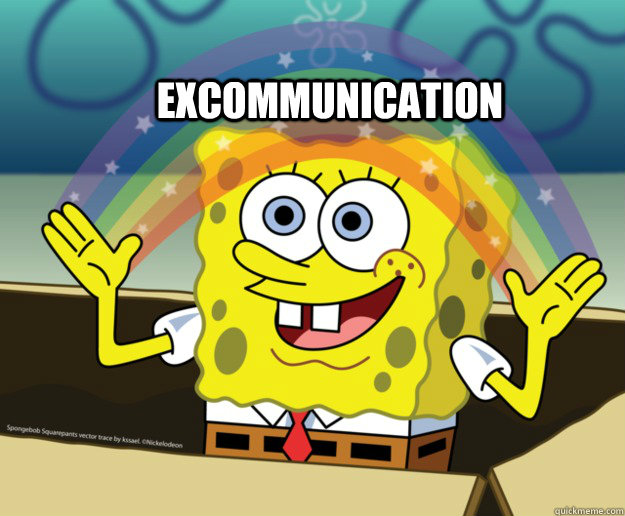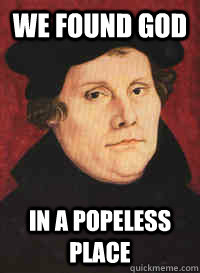During this time, many people had to choose what they were going to believe since new and seemingly rational ideas were being spewing out left and right.


What religion would you choose? Calvinist or Anabaptist?

According to you guys, the Anabaptists are the crazy ones and are more radical and further down the denomination tree than Calvinists. They have three central tenets: pacifists, the church should be separate from the state, and adult baptism. I would call them the hippies of the Christian faith.
 |
| http://theskinnyonline.blogspot.com/2014/08/crazy-eyes-quote.html |

On the other hand, the Calvinists are very strict. Calvin released a "guide book" The Institutes of the Christian Religion. Calvin was so set on his ideas that anyone who didn’t agree with him (dissenters) was referred to as dogs and swine (aka pigs).

Calvinism was not a missionary religion. Calvin believed in absolute sovereignty and omnipotence of God and the weakness of humanity. He believed in predestination, which states that God had already chose people to go to Heaven before the beginning of time. Those who were going to Heaven were the elect and those who were not were called the non elect. The elect also called themselves Saints.

Calvin even created a perfect Calvin society in Geneva, which I believe was more like a crazy cult town. Despite the craziness, the Calvinist church and Geneva became a model for other denominations. Where did Calvin stand on salvation? Did he believe that it could be done through faith alone or through good works. He didn’t really believe in salvation because salvation is deliverance from sin and its consequences and according to predestination those who were damned could not be saved.

Why did Protestants work hard if they didn’t believe in good deeds? The Protestant work ethic is a concept in theology, sociology, economics and history which emphasizes hard work, frugality and diligence as a constant display of a person’s salvation in the Christian faith, in contrast to the focus upon religious attendance, confession, and ceremonial sacrament in the Catholic tradition. This is also why Protestantism and capitalism are tied together.
On the other hand, Catholics believe in both faith and good works. "The works of mercy or acts of mercy are actions and practices which Christianity, in general, expects all believers to perform. The practice is commonly attributed to the Roman Catholic Church” (HA) aka seven corporal works of mercy
 |
| http://en.wikipedia.org/wiki/Works_of_mercy |

Was Martin Luther a radical? No, he just lead the way to radicalism. After Luther, everyone started to express their own ideas and beliefs. I think our class simulates the climate during the Reformation period. Everyone had to make a choice between philosophies; everyone was making their own philosophies (mine’s the best); everyone was saying another person’s belief was wrong (but in our class you’re all just yelling at me). https://www.youtube.com/watch?v=QRxuAvA0220 (CLICK ON THE LINK I KNOW YOU GUYS DON’T WANT TO BUT DO IT) Luther started the chemical reaction that lead to the decomposition of what was once a united Roman Catholic church.












































